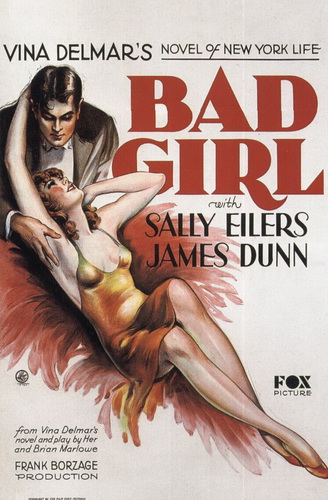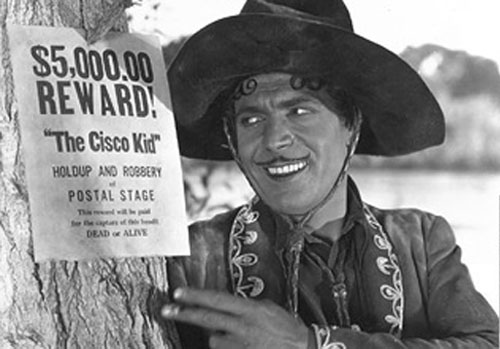Seeing as how I started this day by watching Fifty Shades Darker, it seemed appropriate to end the day by watching yet another film about the difficulty of finding love and commitment. This film came out a little bit earlier than Fifty Shades of Grey. In fact, it even predates the whole concept of fan fiction. This film came out in 1931 and it would probably be totally forgotten today if not for the fact that, 85 years ago, it was nominated for Best Picture.
Of course, that’s not to say that Bad Girl is particularly well-known. Until I came across it on my list of best picture nominees, I didn’t know that it even existed. According to Wikipedia, it was based on a novel and a play and it did rather well at the box office. The Academy apparently liked it, awarding it Oscars for both Best Director and Best Adapted Screenplay. It’s currently available on YouTube. That’s where I saw it. But, despite all of that, it definitely appears to be one of the more obscure films to have ever been nominated for best picture.
Bad Girl opens with Dorothy Hailey (Sally Eilers) in a wedding gown. However, she’s not getting married. Instead, she’s a store model and, in a rather surreal little sequence, Dorothy and her co-workers walk through the store in their bridal gowns while sleazy men leer at them. As Dorothy complains to her best friend, Edna Diggs (Minna Gombell), men are “only interested in one thing.” When Dorothy’s boss propositions her, Dorothy claims to have a prizefighter husband waiting for her at home. In truthfulness, Dorothy lives with her overprotective brother (William Pawley), a judgmental brute who accuses her of being a tramp if she stays out too late.
At Coney Island, Edna makes a bet that Dorothy won’t be able to get surly Eddie Collins (James Dunn) to talk to her. Dorothy takes the bet and then proceeds to go over to Eddie and play a ukulele, until Eddie gets annoyed enough to tell her to be quiet. Eddie claims to not like women and he accuses Dorothy of being a tease. “Listen, sister,” he tells her, “if you don’t want guys to salute, take down the flag.”
Wow, Eddie sure does seem to be a jerk, doesn’t he?
Well, don’t worry. It turns out that Eddie isn’t as bad as he seems, it’s just that he’s often in a bad mood because he doesn’t have much money and he wants to open up his own radio store. However, Eddie and Dorothy quickly fall in love and soon, they’re married…
But, of course, things never go that smoothly. It turns out that Eddie is proud and stubborn. Fortunately, he’s played by a charming actor named James Dunn because, without Dunn’s considerable working class charm, Eddie would probably be insufferable. Dorothy, meanwhile, fears letting Eddie know that she’s pregnant…
And you know what?
I liked Bad Girl.
On the one hand, Bad Girl is definitely a dated film. Any film released in 1931 is going to seem dated when watched in 2017. But, at the same time, that also means that Bad Girl works as a nice little time capsule. Watching Bad Girl was like stepping into a time machine. And it turns out that the 1930s weren’t that bad! Everyone wore nice clothes and talked like James Cagney.
But, dated it may be, there is also an almost timeless quality to Bad Girl. Even decades after the film was originally released, the likable chemistry between James Dunn and Sally Eilers feels real and you really do care about what happens to them. You feel like they belong together and it’s hard not to worry when they fight or when they misunderstand each other’s intentions. (This happens rather frequently.) Furthermore, Bad Girl is a film about people who, often times, are struggling just to make ends meet. That’s something to which everyone can still relate. It certainly sets it apart from a lot of the other films made both then and today.
Bad Girl was nominated for best picture but it lost to a film that was almost its total opposite, Grand Hotel. Unlike most of the other old best picture nominees, I have never seen Bad Girl on TCM but it is on YouTube and you can watch it below!

